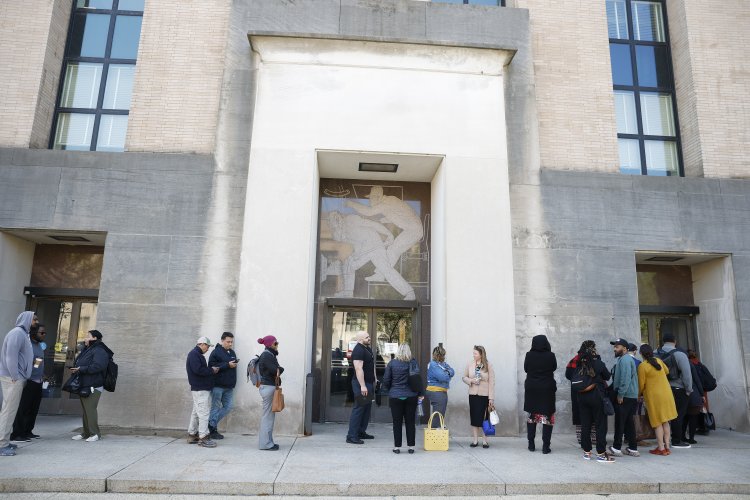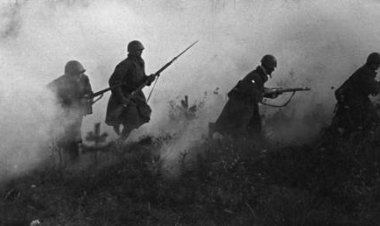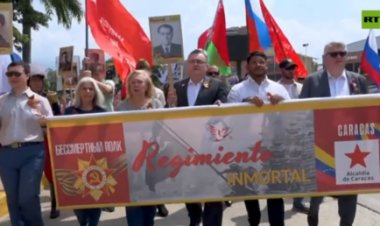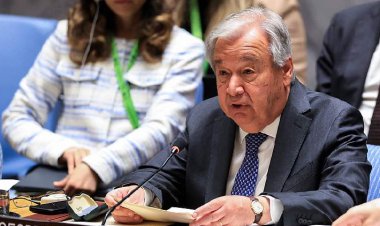Staff Reductions at RFK Jr.’s Office Cause Disarray Among Health Workers
Employees who remained after this week's mass firings report that management has not offered any explanation.

Kennedy has not provided a count of the firings, and due to an information blackout from the administration, employees are tallying the losses through shared Google documents, spreadsheets, and notes. While middle managers have offered some updates during hastily scheduled meetings, they have been reluctant to document anything formally. Unions representing workers have requested an official tally but have yet to receive it, leaving them to crowdsource estimates while remaining largely unaware of the full extent of the cuts.
Workers describe the experience as shocking and indicative of the unprecedented nature of the administration’s actions. Traditionally, in agency downsizings, affected staff were given notice months in advance to wrap up their projects or transition them to others. The abrupt approach taken by Kennedy, according to a staff member at the Centers for Disease Control and Prevention who spoke anonymously for fear of retaliation, “reveals an intention to create chaos and misery.”
At the CDC’s National Institute for Occupational Safety and Health, “they wiped out our chain of command in one fell swoop,” said Micah Niemeier-Walsh, vice president of a local union affiliate representing workers in the agency's Cincinnati office. “It’s not just an attack on NIOSH employees — it’s a direct attack on all workers.”
CDC employees are collaborating to identify who has lost their jobs, sharing lists detailing which offices have been impacted, as shown in screenshots provided to PMG by another anonymous employee fearful of retribution.
Complicating matters further, some workers remain uncertain about their employment status. Some did not receive any notification of termination but found themselves locked out of HHS accounts, devices, and office access. Others were informed they would be let go without formal confirmation. On Thursday, Kennedy announced his intention to reinstate a fifth of those initially affected by the cuts.
The Department of Health and Human Services did not respond to requests for comments. An HHS memo obtained by PMG indicated that 10,000 positions were eliminated to reduce bureaucratic redundancies, cut back on the budget that grew during the Biden administration, and better align agency resources with Kennedy's goal of tackling chronic diseases. However, the memo lacked specific information about where the cuts occurred.
Even employees shielded from layoffs, such as enlisted members of the U.S. Public Health Service Corps, feel uncertain. They were informed by their managers on both Monday and Thursday that they would be reassigned, but details about their future remain unclear.
Amid uncertainties about further reductions, staff are trying to maintain their work responsibilities, including drug and medical device approvals, outbreak guidance, and advising providers on delivering optimal patient care.
“I really don’t know what’s going to happen to FDA with all of this,” shared a Food and Drug Administration employee who requested anonymity for fear of termination. “There will be no operations. I don’t know what’s going to happen.”
The FDA, responsible for reviewing drugs and medical devices, is struggling to sustain basic activities and meetings with industry stakeholders, according to the worker.
Remaining FDA personnel have compiled a list of dismissed colleagues within the Center for Drug Evaluation and Research, discovering around 800 were let go. They realized the agency's library staff had also been terminated after reading an announcement on an internal webpage, relying on media reports for further information.
“[W]e’re often finding higher quality information from news reporting than anything internal,” said an FDA employee granted anonymity to speak candidly.
The National Institute for Occupational Safety and Health, where Niemeier-Walsh works, was one of the divisions hardest hit, with hundreds of employees in Washington and satellite offices in Morgantown, West Virginia; Spokane, Washington; and Cincinnati placed on administrative leave, terminated, or informed they would lose their jobs soon.
These cuts have halted numerous projects—some mandated by Congress—that support worker health, such as the Firefighter Registry for Cancer, the Firefighter Fatality Investigation and Prevention Program, and the mobile clinic operated by the Coal Workers' Health Surveillance Program.
Edward Kelly, general president of the International Association of Fire Fighters, issued a statement to PMG after meeting with White House officials who assured him that the cuts would be reversed. “The Trump Administration assured me that firefighter safety remains a priority, and the White House is actively working to restore these critical HHS programs,” he stated.
Among those impacted by this week's purges were NIOSH staff responsible for the World Trade Center Health Program, which addresses health issues resulting from the 9/11 terrorist attacks.
Michael Barasch, a leading attorney and advocate for 9/11 survivors and their families, noted that even if Kennedy reverses the cuts, many doctors and staff in the program may choose to leave rather than work in an unstable environment. “They feel like they’re at a tennis match — it's back and forth and back and forth,” he explained. “It’s already a six-month wait now [for an appointment in the program], which could even become longer depending on how many doctors leave, how many nurses leave.”
Niemeier-Walsh expressed frustration over the lack of clarity surrounding promised reinstatements. “I've heard nothing from the White House, CDC, or whoever is left at NIOSH,” she remarked.
James del Carmen for TROIB News












